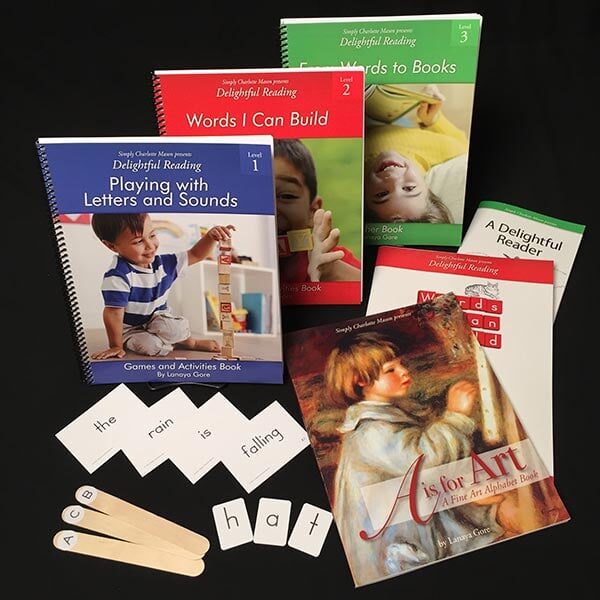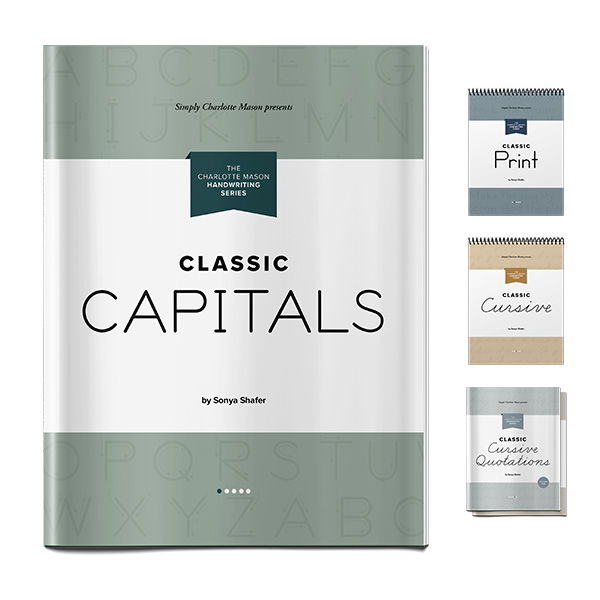60-day returns • free shipping on USA orders $129+


Probably the best way to illustrate Step 2 is to talk about the importance of framework. I saw an interesting video clip in which some instructions were read that were difficult to remember or to relate with. But once the person gave the viewer one little phrase . . .
Whoa. Stop right there. Take a moment to analyze what your mind is doing. How are you feeling about this post?
Chances are you’re either puzzled and floundering a bit or disengaged and skimming at this point. Why? Because I didn’t help you find your bearings at the beginning.
Let’s start over. Clear your mind; here we go. Ahem, . . .
I hope you’ve been finding this series on the 5 Steps to Successful Narration helpful. Remember that a good narration lesson has these five steps:
- Pick a good living book.
- Look ahead and behind.
- Read the passage.
- Retell the passage.
- Discuss ideas.
Last week we talked a bit about Step 1: Pick a good living book, and we used the story of the Good Samaritan as an example of what to look for. Do you recall anything about that story and the components it contained, which would make narrating easy?
Today let’s talk a bit about Step 2: Look ahead and behind. This is a step that is often overlooked, but by now I hope you understand how important it is to help your reader or listener find her bearings as you get started.
Okay, stop again and analyze what you’re thinking and feeling now. Do you feel a little more prepared to forge ahead? What made the difference? I guided you in looking behind and looking ahead. I helped you find your bearings—your position in relation to all the things you’re dealing with.
When we jumped right into the details, with no hint of where we were in the discussion or where we were going, it was very difficult to focus and fully absorb what I was saying. But when we took just a minute to look behind and look ahead, your mind was better prepared to learn, because now it knew what to do with the input it was about to receive—where to file it, if you will.
Look Ahead and Behind
To help your reader or listener find her bearings, touch briefly on what was read last time from that book. Don’t go into great detail, though; you want the student to do the mental exercise of pulling up that memory. Once that mental “rope” has been pulled out of the mental “well,” it will be easy to tie the next portion of the book to it, thus constructing a continuous line of thought.
So encourage your student to remember the main points, or highlights, of last time’s reading. Then give her a taste of what is coming in today’s reading.
This step is also your opportunity to define any crucial words that you know will be needed for the student to understand. For example, I recently read a short story about The Boy and the Filberts. If I were going to read that story aloud to my children, I would want to tell them right up front that filberts are a type of hazelnut. Think about it. How can they picture the story in their mind’s eye if they don’t know what you’re talking about?
Now, don’t go overboard and give them a list of twenty vocabulary words from the chapter to look up and define before you read! Most words will be defined naturally in context. Don’t steal the joy of a well-written story, but do give your students any crucial point that is necessary for understanding. Help them find their bearings.
One more hint. You may want to pull two or three key words from the reading for the day and write them on a little white board or sheet of paper so the student can see them. Use those words to help the student look ahead. Tell her that she will hear those three words in the story and should use those three words in her narration. Then leave the list on display while you read and while she narrates. Those words will gently guide her in learning to listen for key names or concepts, plus they will form little mental hooks for her narration. (And as an added bonus, she will see how those words are spelled.)
Looking behind is easy. It doesn’t take any preparation to flip open the book, glance at the previous chapter, and say, “Oh, yes, last time we read about the Good Samaritan. What do you recall about that story?” But to help our students have a successful narration, we need to invest some time in preparing—in looking ahead, ourselves.
It will probably take less time than you expect, but we need to get in the habit of looking ahead before the lesson begins. Take a few minutes to look over the reading for today and find any key words or crucial points that will help your student find her bearings. Determine how today’s reading can be tied to last time’s reading.
That little extra time—to scout around the uncharted territory of the new chapter and determine how to help our students find their bearings as they take the next step—is an important part in successful narration. Try it this week.
Finding Your Bearings in Beginning Reading and Writing
If you are helping a child learn beginning reading and writing skills, it might be helpful for you to see how these Simply Charlotte Mason resources fit together. That way you can see where you are in the process and where you might want to head next. Each resource below builds on the previous one and gently guides your student toward fluent reading and handwriting.


Delightful Reading—A complete reading curriculum kit that faithfully reproduces Charlotte Mason’s method of teaching reading. Uses sight words and word-building, rich reading selections, word and letter tiles, creative sentences, a word notebook, and more. Now reading lessons can be delightful! (Early Years–Grade 2)


The Charlotte Mason Handwriting Series—A complete handwriting curriculum using the Charlotte Mason Method.

Thank you, SCM, for providing such wonderful encouragement and instruction. Your gentle reminders (ex. this current series on narration) are a blessing of continued education. As a CM home educator, I truly appreciate all the support you offer on a daily basis.
Thank you,
Becca<
I agree whole heartedly with Becca! This series is timely as I realize we’ve gotten, or rather, I’ve gotten sloppy in what’s required of late. This post will help us get back to the right form. Thank you, christie
Love this reminder! Thanks so much SCM!!
Does step 2 apply to older independent readers such as a 12 or 15 year old? If so can you give me an idea what that might look like for someone who does most of their work independently?
Good question. This step is another reason we read to our younger children, using good books above their independent reading level and walking through the process. It gives them practice in using this foundational strategy for learning. If the child has had experience doing these steps with a guiding teacher during the younger years, he will be prepared to do the mental review himself and be on the lookout for connections as he reads the new chapter.
If the older child has not had prior experience with the steps of narration, you may want to do a few chapters together to teach him this powerful strategy or at least coach him on how he can best self-educate using the five steps. You might explain the illustration of a continuous string of thought and how mentally reviewing the previous chapter brings it up in our minds so we can tie on the next part. Then encourage him to look for more connections as he reads and possibly to jot down key words or words he wants defined to structure his narration afterwards. Ideally the goal is for him to keep those key words in his mind and do the whole process mentally, but most of us need to get to that ideal by gradual steps.
Thank you.